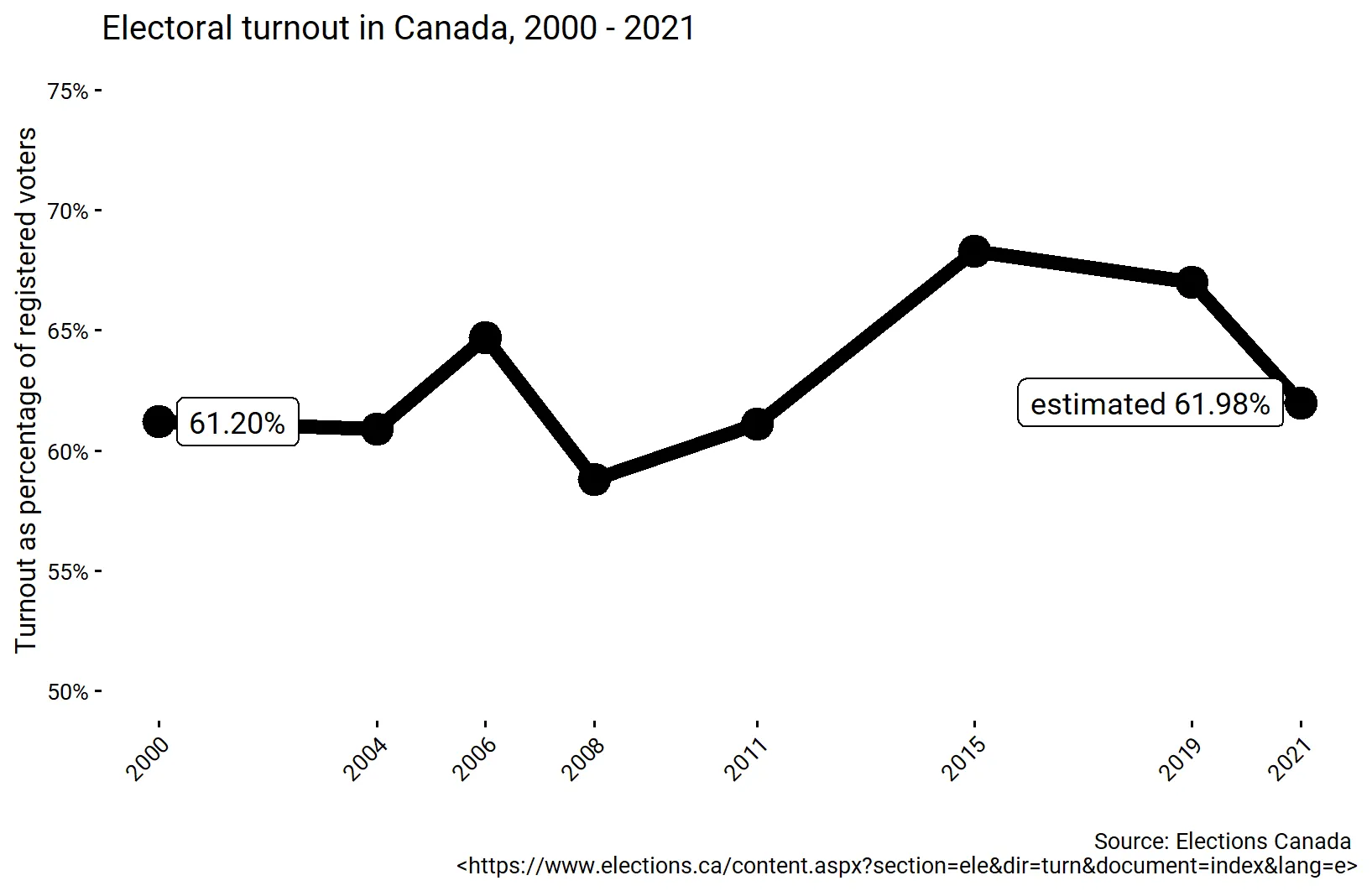A snap vote in the pandemic shows Canada as one of a kind

On 15 August, Canadian Prime Minister Justin Trudeau called for a snap election. This September election, a full two years before the next elections were due, was an opportunistic move. As leader of the Liberal Party, Trudeau had been governing with a plurality (but not a majority) of the seats in the House of Commons since 2019. In the summer of 2021, the Liberal Party was polling well, and the election call was an attempt to translate that polling support into a majority government. The context of the pandemic made this election unique in Canada, and in rare company in the world.
Very few national elections have been held by choice during the pandemic. In fact, International IDEA’s pandemic election tracking shows that many elections were postponed early in the pandemic, with most of those being held later in 2020. However, the Canadian election that took place on 20 September 2021 is one of only five national elections that was moved forward to take place during the pandemic (the others are Bermuda, Croatia, North Macedonia, and Kosovo).

There had been some indications that an autumn election was likely as early as the beginning of the year, including a cabinet shuffle in January, and much speculation from polling firms and pundits in July. But as the fourth wave of the pandemic began to manifest itself in Canada (especially in the western provinces), the actual election call came as an unwelcome surprise to many voters who felt that a vote during the pandemic was an unnecessary risk. Even so, the Liberal Party’s political justification – that the government needed a new mandate from Canadians to pass the kind of legislation that would guide a successful pandemic recovery from the pandemic – was not unreasonable.
The conduct of the election itself benefitted from the successful examples of provincial and territorial elections that had been held in the preceding year and a half in New Brunswick, British Columbia, Saskatchewan, Newfoundland and Labrador, the Yukon, and Nova Scotia. The 2021 election saw huge growth in the use of early voting and postal voting, as Canadians who might be cautious about public gathering places chose safer ways to vote. Nearly one million Canadians voted by mail (20 times higher than in the last election), while another 5.8 million voted early. With 99.96 per cent of the votes counted, turnout stood at 61.98 per cent. While this is the lowest turnout in a decade, it is still reasonably high when the context of the election is considered. This speaks to both the success of special voting arrangements, and the sense of civic duty that motivated many voters despite widespread dissatisfaction with the decision to call an election at all.
The outcome of the election must have come as a disappointment to the Liberal Party. The next Parliament will look much like the previous one, with seat counts for the major parties largely unchanged, and the Liberal Party back in power in a minority government. In a globally comparative context, it will be interesting to see if the argument that legislating the recovery from the pandemic is a justification for new elections (at least in those countries where there is some flexibility on election timing).




